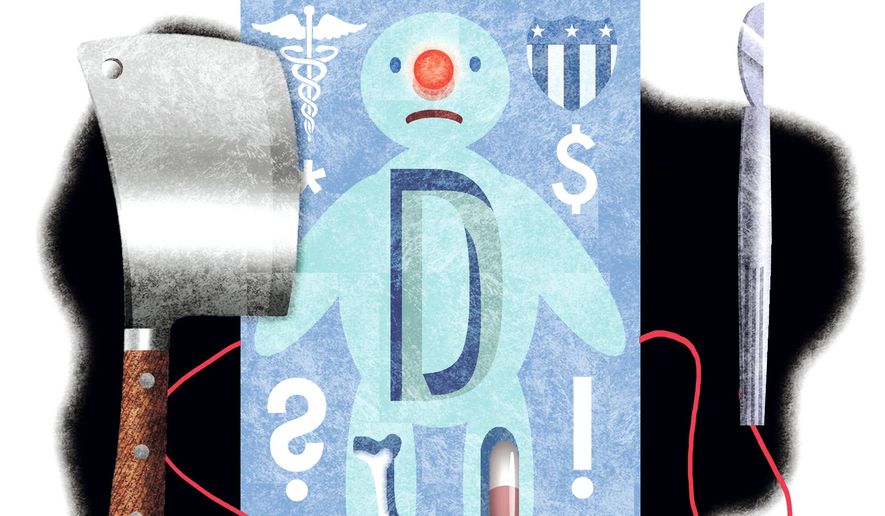OPINION:
When is the last time anyone heard of a government program not only working well, but also coming in under budget? Yet that is the reality of Medicare Part D, a market-driven program that provides the elderly and some disabled Americans with drug coverage that nearly 90 percent say they are satisfied with; but that is not the end of the story.
Frustrated by Big Pharma and “problematic incentives that both raise costs to the federal government and leaves beneficiaries’ with potentially significant out-of-pocket spending,” both the U.S. House and Senate have introduced measures to fundamentally restructure the Part D benefit that will have huge unintended consequences on access to needed medications for patients with rare diseases.
The proposals put incentives at risk for companies investing in developing new rare drugs for smaller populations that Congress would, perhaps unintentionally, shut down by ignoring the costs and unique challenges in developing those therapies.
For rare disease patients, the current proposals represent a sledgehammer coming down on a fragile market when a scalpel would better solve the problems.
Congress defines a rare disease as impacting fewer than 200,000 patients. Today, there are between 25 million and 30 million people who suffer from these rare diseases. Smaller, emerging companies often develop the drugs that are desperately needed to save and extend patient lives. With ultra-rare patient populations, the resources and profits even more limited, which is why family foundations and small companies, some with no products on the market, often drive innovation.
The non-profit Rare Access Action Project (RAAP) assists people with such conditions to navigate complicated market forces. A recent Tufts Center for the Study of Drug Development study published in the Journal of Health Economics concluded the cost of developing a new drug can go as high as $2.6 billion, and only about 12 percent of those under development succeed. In rare disease research, costs vary widely and clinical trials present unique challenges, including ill-defined and very small patient populations, lack of natural histories, and few assays or diagnostic tests.
Uncertain return on investment for rare disease therapies keeps many companies out of the market. Despite these challenges, a few intrepid emerging companies are forging ahead with new treatments for diseases that have languished by convincing financial stakeholders to take a leap of faith, even in the face of uncertain markets and hard to find patient populations. The proposed Medicare Part D changes make rare disease therapies a square peg not easily pounded into the round hole of policy.
To illustrate the problem, consider that currently patients who reach the catastrophic threshold of their drug coverage under Medicare D must pay about $3,700 out of pocket and then 5 percent of all costs after that. In the latest data available, 3.6 million people had total drug spending above the catastrophic coverage threshold in 2017.
Some members of the House and Senate want to use price controls to dictate drug prices. Elsewhere, they want to require companies to cover the out-of-pocket costs for their patients who enter the catastrophic phase of their benefits.
Both measures carry significant consequences for future investment in rare therapies. For example, in order to pay for the patient out-of-pocket cap, a new 20-30 percent company liability has been offered in the Senate and House bills. This obligation would devastate innovation, especially for patients counting on emerging companies that specialize in producing new oral, rare treatments for seniors.
In a perverse way, the proposed liability actually strengthens the hand of Big Pharma as many smaller, emerging companies would be forced to sell their innovations. Price controls don’t work for orphan drugs that are increasingly made available as partnerships between the patient community, academia and emerging life-sciences companies.
Historically, Congress has been an important partner in rare disease research, creating effective incentives for new technologies and treatments with a bipartisan commitment. During the first 25 years of the Orphan Drug Act, the FDA approved more than 600 new therapies for rare disease patients. But the proposed price controls and new liabilities dramatically shift the economic incentives to the development of drugs in areas already well served and that have stronger profit projections for the innovator.
By simply capping out-of-pocket expenses for rare disease patients, Congress could provide immediate benefits. RAAP has advocated that the Gap Coverage Discount Program be amended so that rare disease companies can cover the 5 percent of patient catastrophic out-of-pocket costs. Coupling such a policy with rebalancing the federal subsidy would encourage plans to continue negotiating lower costs thereby improving quality.
And more stakeholders can be enlisted to help, including those that manufacture generic medicines that are exempt in current proposals from contributing to this effort to help the elderly and disabled. Spreading the out-of-pocket cost over a year, rather than paying a lump sum at the beginning of the year, could achieve additional financial relief for rare disease patients.
These simple, high impact reforms would fine tune the very successful Medicare Part D program.
What won’t work is painting emerging rare disease companies with the same brush as Big Pharma. Rare disease innovators are much more diverse and include emerging companies that look nothing like the multi-national global drug industry. While the rare disease populations they treat are smaller, the human costs are just as critical, and the solution demands a more precise fix than is currently being proposed.
• Michael Eging is executive director of the Rare Access Action Project and a partner in Acuity Strategic Partners.




Please read our comment policy before commenting.